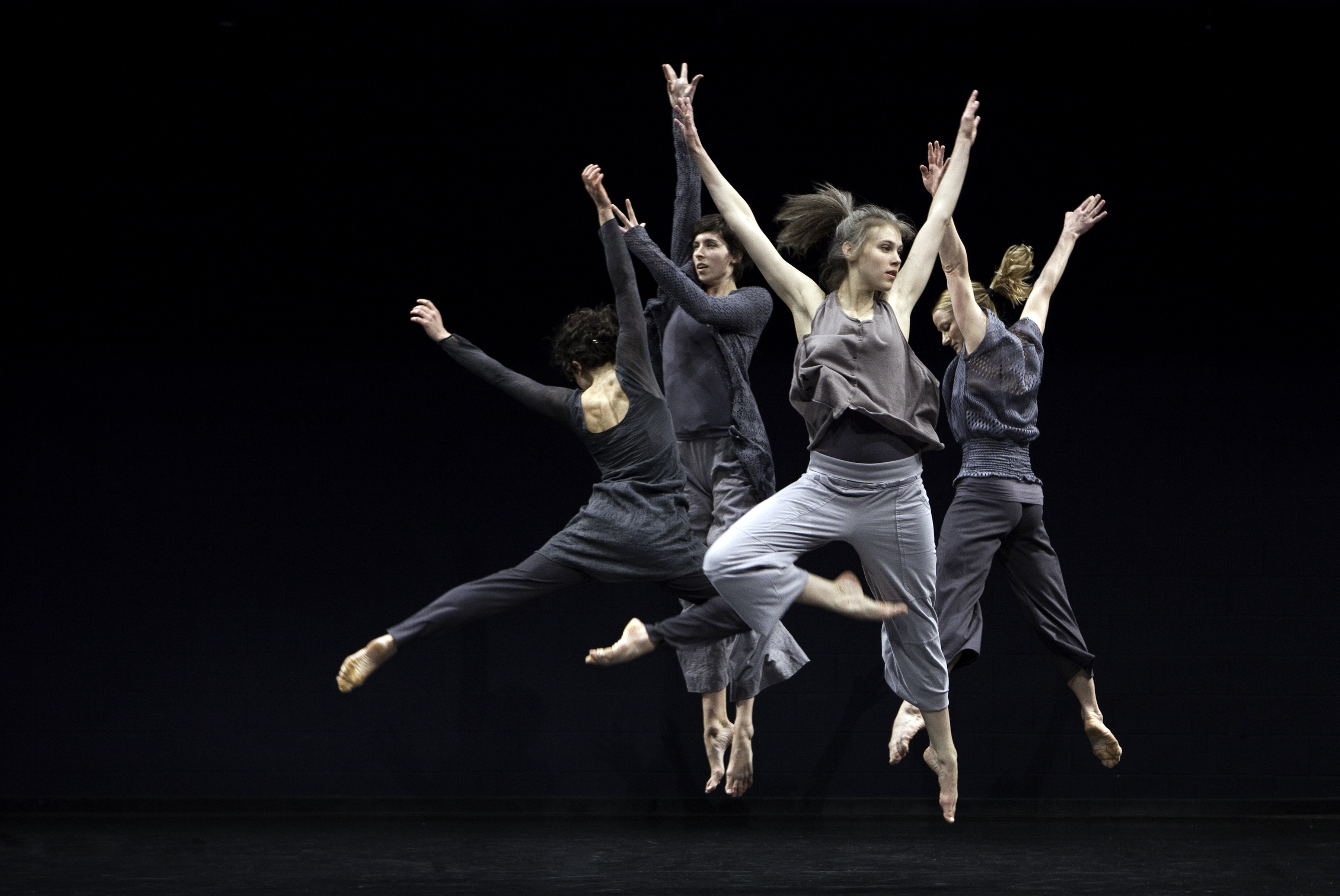To play with tone, he told us he often asks his dancers to mark their steps, and then chooses that lighter touch for the final product. He’ll also upend the musical choice, swapping opera for pop rock. To create shapes and relationships between steps in a phrase, Varone demonstrated a brilliant technique that has lingered in my mind for weeks. First, he brought about 8 audience members onstage. He placed his volunteers around the stage in various positions, then had his company dancers go up to these stationary folks and alter their gestures (lower an arm, pick them up, etc) or inject their own moving body, or a part thereof, into the white spaces created within the volunteer’s shape. Okay, that’s an obvious technique — to behave relationally to static people — but one thing that seemed odd was how each Varone dancer — as soon as they’d been given their pathway amongst the bodies — immediately went upstage behind the volunteers to practice the moves on their own.
This mystery was revealed when Varone suddenly thanked the volunteers and told them to leave the stage. He asked the dancers to set off on their journey through the bodies without the bodies present. The men and women began lifting and jabbing at the air, stopping and starting as if pulled by unseen forces. It was so magical, and sparked such exquisite metaphors — how fervently we continue gesturing to the departed, reaching for them and reacting to them, long after they’re gone. He also had the dancers embark on the same kind of exercise with wooden folding chairs. A dance was created around and with the solid wooden shapes: then the chairs were removed.
Body paintings — that’s why his dances feel so organic and careful at the same time. Thank you for this lesson, Doug Varone.
